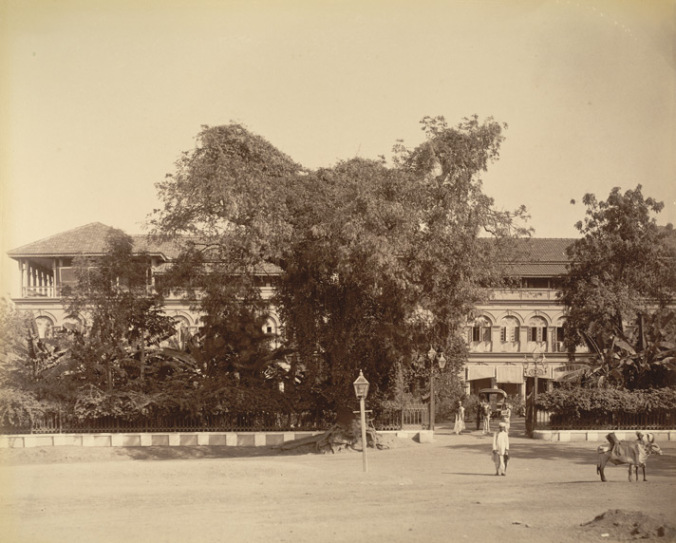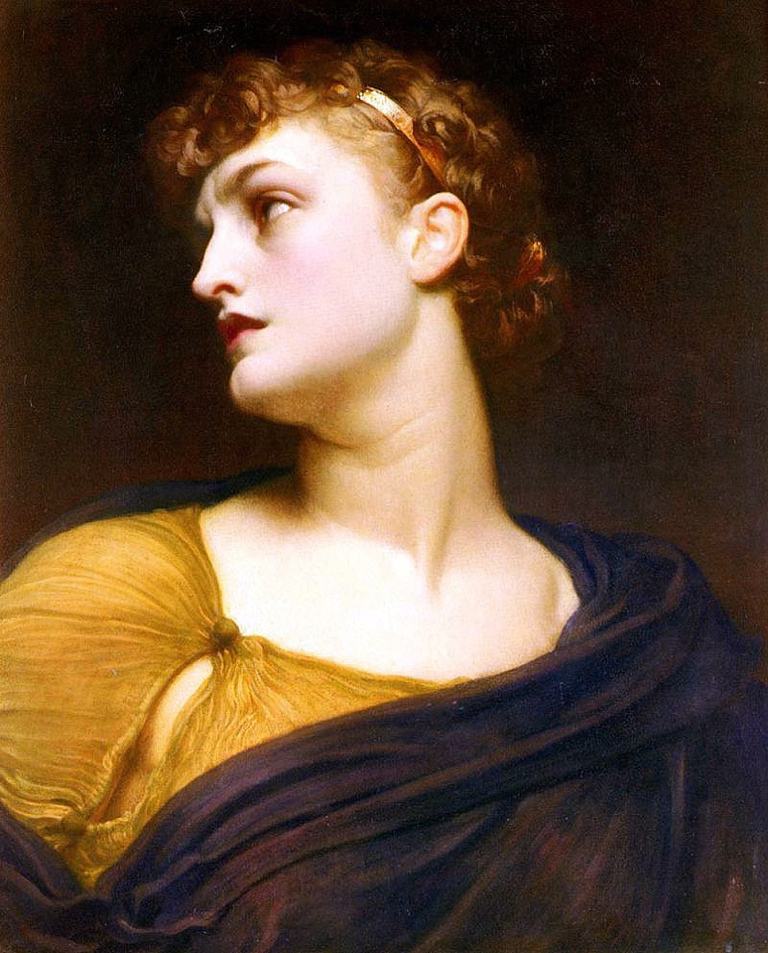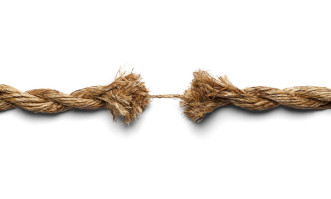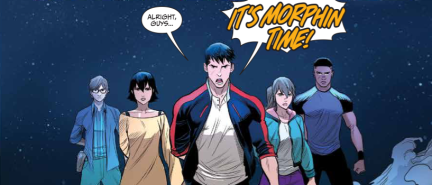Everything you needed to know about the Record Room in Baroda
by Nandini Bhattacharya

Photo courtesy of the British Library, London
The old Kothi, which housed the record room, since replaced by a resplendent building in 1922
The city of Baroda like all of small-town India has changed so much in the past two decades, that it is unrecognizable from the charming, slow-paced erstwhile princely capital that it was, formerly. Before they were swamped by the expanding concrete high rise buildings and the ubiquitous glass- and -chrome shopping malls and multiplexes, the prominent and visible architecture of Baroda included palaces, college buildings, hospital and marketplace erected in the Indo-Saracenic style during the reign of Maharajah Sir Sayajirao III (r. 1873-1939).
The archives or the Record Room of the former Baroda State is in one such princely building, the Kothi-which was the Secretariat of the Baroda Durbar until 1948. The Kothi still functions as the collectorate office of the district of Baroda (renamed Vadodara) today. The Kothi was built in 1922, inspired, it is said, by the royal Balmoral castle in Scotland, and replaced an older building, serving as the Secretariat from the late nineteenth century on, at the same site.
The archives and records of the erstwhile Baroda State represent the reinvented and modernized state itself during Sayajirao’s reign; like similar princely states (most prominently Travancore and Mysore), the content of this modernity was ambivalent and fragmentary. Nonetheless, Sayajirao’s reign oversaw the reformulation of the Baroda State’s infrastructure in certain fundamental ways. The most significant of these was the streamlining of revenues, which included tributes from scores of smaller princely states in Gujarat and Saurashtra, and the organization of alternative sources of revenue from the traditional agrarian surplus such as the imposition of control, licensing and taxation on opium, salt, and alcohol. The new institutions of the state included the establishment of the famed Baroda College referenced on the western university model followed by the Bombay Presidency; investment in an extensive railway line across and beyond the State, and the rudiments of public education and health systems. The capital city itself was rebuilt to display the amenities of a modern civic culture: these included public gardens and libraries and a museum and art gallery that teemed with paintings and artifacts imported from Europe.

Marooned in a crowded bazaar
The Kothi is now marooned in the crowded bazaar, court house and offices of the old city that surround it. The Record Room itself, housed in a separate one-storey block, looks abandoned and quiet in contrast, much like many other provincial archives in India. The difference, however, is that here the records are generally maintained in excellent condition and are in order, a rare exception for a regional archive. There are bahis in both English and in Gujarati (the Bodiya script). The day-to-day administration of the Baroda Durbar was recorded in Gujarati, and therefore the bulk of the documents are in the Gujarati Bodhiya script. Both the records begin from around the 1770s and continue until the 1930-40s.
Huzur English and Huzur Political
The substantial numbers of archival documents in English are from two principal offices of the Baroda administration: the Huzur Political and the Huzur English. Both are comprehensively indexed. The indexes are available in the form of hand-written registers. I have had the occasion to use them the occasion to use them several times over the past ten years and although these are now in tatters, they are still serviceable. There was talk of extensive digitization in the archive around four to five years ago, but steps in that direction are now not visible.
The Huzur Political series is an eclectic one and contains correspondence related to almost every department; revenue including abkari, audit, general administration reports, education, health, government orders and notifications, roads, railways and municipal governance, to name the most substantial ones.
The Huzur English series contains correspondence between the Court, the Dewan’s office, and the Residency. Given that the Residency interested itself in every branch of administration from the royal palace intrigues to the revenues, the Huzur English series is fairly comprehensive as well. It is not a coincidence that the Baroda Durbar has engaged the attention of scholars exploring a range of historical problematics related to the princely states from high politics and diplomacy to courtly culture; agrarian land systems to the princely states’ indigenous modern cultural and material entanglements. The sheer ease and access to the documents of the Baroda State and by extension, its tributary states in the south, central, and north Gujarat and Kathiawad offer great opportunities to researchers of western India. Research students from the M. S. University of Baroda use the archive extensively for their postgraduate and doctoral theses.

The room
There is a large shared desk in the sitting area for research scholars, and although there is no air conditioning, it is a pleasant working space. The deputy archivist has his desk in the same space and is present to help the scholars if necessary and to keep an eye on them. Until very recently this position was occupied by Mr. Solanki, who was very knowledgeable about the archive and represented, in fact, the sum of institutional memory in that place. He displayed several visiting cards of research scholars from India and abroad under the glass on top of his desk. I remember seeing Barbara Ramusack’s, for instance. It is clear that officials at this archive are proud of their collections and of their ability to assist research scholars. The archivist himself sits in a separate office and in my experience, found it best to direct all queries to his deputy.
Working hours and bring a letter with you
The working hours are from 11 to 4, Mondays to Fridays. Requisitions for files and bahis are accepted all day until 3. One minor inconvenience of accessing the archive is that the Baroda Record Room insists on a letter of introduction from a member of the faculty, the department of history at the M.S.University of Baroda, regardless of any other credentials the outstation research scholar may produce. While this may provide opportunities for enjoyable socializing over tea at the history department to many, it is not always suitable for strangers who arrive there on short visits.

Kopra kachoris
There are government offices across the road from the record room; along with the collectorate itself, these contribute bustle and urgency to what would otherwise be a very quiet corner in the Kothi complex. Researchers at the archive use the canteen at the office across the road which serves tea and snacks, including delicious kopra kachoris.
Dr. Nandini Bhattacharya is Director, Scottish Centre for Global History, School of Humanities (History), University of Dundee, UK, and author of Contagion and Enclaves: Tropical Medicine in Colonial India, Postcolonial Studies series, Liverpool University Press, 2012. Contagion and Enclaves examines the social history of medicine in two intersecting enclaves ; the hill station of Darjeeling ; and the adjacent tea plantations of North Bengal.
Advertisements Share this:




